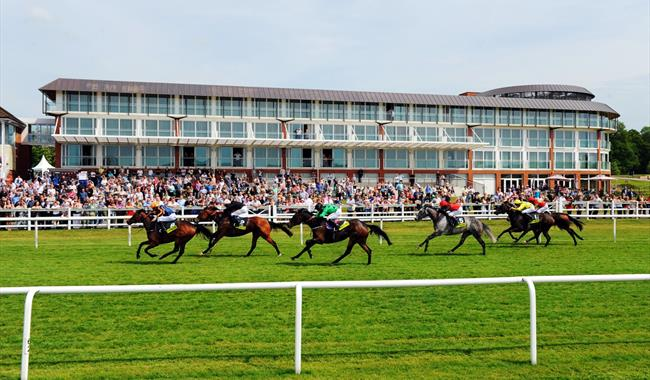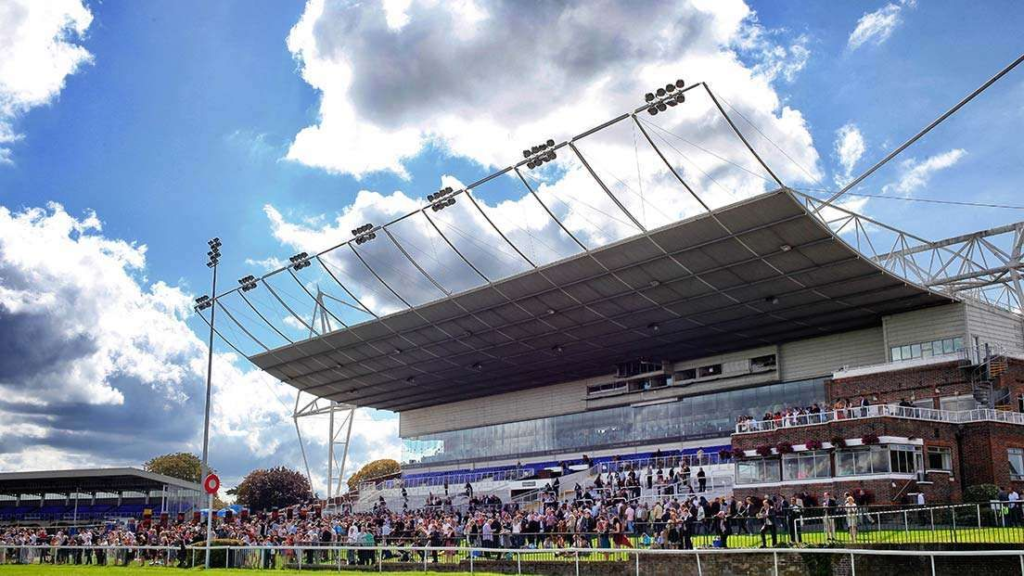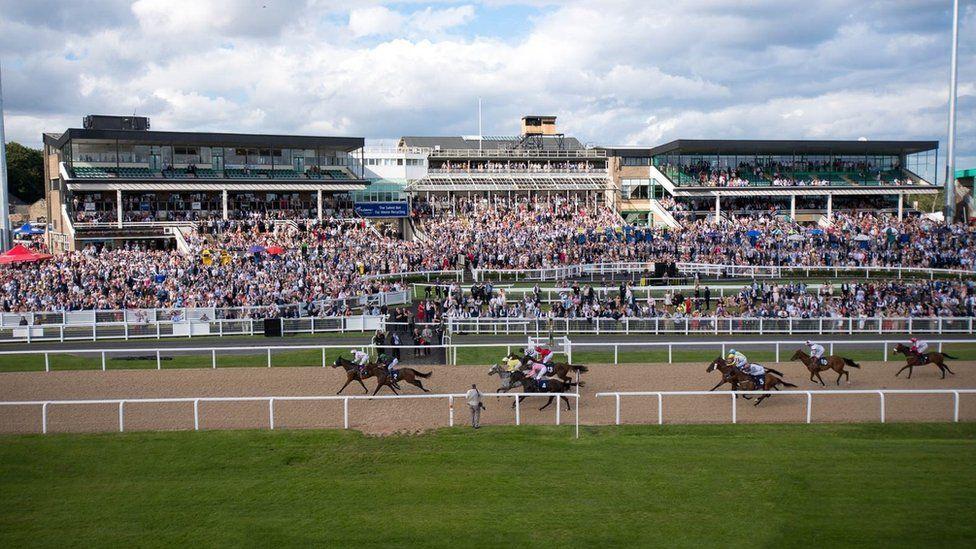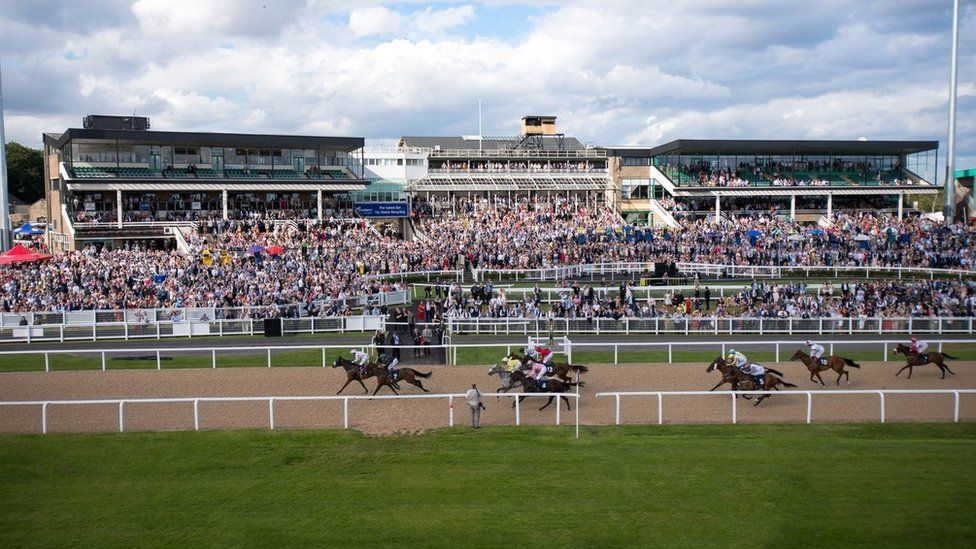Lingfield is best known as a winter all-weather flat-racing course in the United Kingdom and is a Polytrack, rather than the usual turf racecourses found in the UK. There are only five other all-weather courses in the UK, the others being at Southwell, Kempton, Wolverhampton, Newcastle, and Chelmsford City (formerly Great Leighs Racecourse). Both the Turf tracks and the All-Weather tracks have their advantages and disadvantages when compared to each other, but a question many racegoers ask is which one allows horses to run faster.
Do Horses run Faster on Turf or Dirt (All Weather) – Dirt races normally have the quickest pace of the three surfaces, whereas turf most times, especially over longer distances, have a leisurely start followed by a sprint to the finish. Artificial (all-weather) surfaces generally fall in the middle. The grass is a more slippery surface than dirt (hence why meetings are canceled when torrential rainfall happens on a Turf track), and it becomes much harder as it dries. However, due to the cushion under their feet, it is also gentler on a horse’s feet and legs. Turf is also the quickest of the surfaces, and speed horses will run very quick times, especially over the sprint distances of 1000 and 1200 metres.
Turf Tracks and Royal Ascot
Turf Tracks are dotted all across the United Kingdom. It is always considered the quintessential test of any racehorse, and all the top Group Races (Group One and Two) are races on the Turf. The top meeting in the United Kingdom is the annual Royal Ascot Meeting, held at Ascot Racecourse.

It is known as Britain’s most traditional horse racing week, attracting many of the world’s greatest racehorses and riders for prizemoney over an eye-watering £6.58 million. The event normally attracts a large number of royals, millionaires, and horse enthusiasts from all around the globe. The top races across the five-day spectacle are –
- Tuesday – St James Palace Stakes (Group 1) over 1m
- Wednesday – Prince of Wales Stakes (Group 1) over 1m2f
- Thursday – Gold Cup (Group 1) over 2m4f
- Friday – Coronation Stakes (Group 1) over 1m
- Saturday – Diamond Jubilee Stakes (Group 1) over 6f
However, in the UK racing has to try and go ahead even when the weather is not the best for a lovely day of racing at your favourite track. All-Weather tracks were introduced to ensure that the weather would not disrupt racing, especially in winter and therefore All-Weather tracks were introduced into the annual horseracing schedule.
Guide to All-Weather Racing in the UK
- Lingfield
Lingfield Park is the most prominent all-weather track in the United Kingdom. Every year on Good Friday, it hosts the All-Weather Championships. Lingfield’s surface is Polytrack, which normally favors fast horses.

Around a narrow circuit like Lingfield, you can expect extremely quick finishes. The course is also somewhat downhill, which increases the horses’ speed — it is the fastest all-weather track in the UK. Lingfield always makes for very exciting finishes, especially in the lower Class races.
- Southwell
Southwell was the only track in the UK to employ Fibresand. Because fibers are the slowest all-weather surface, races may be exceedingly challenging. To win up the lengthy Southwell straight, a horse with endurance is favoured and you often see horses “running in slow motion” as they approach the finishing post. The kickback and the sluggish nature of the terrain favours front runners.
Fibresand is fairly deep, and work on the track may sometimes produce some fantastic track bias. The center of the track is often regarded as the ideal spot to race, however, this may rapidly change on a given day.
- Kempton
Kempton’s flat track was rebuilt with a Polytrack in 2006, and the track has hosted all-weather racing since then. They maintain a high-quality of flat races, and therefore a good quality of horse and jockey compete at these meetings.

It’s a flat oval course with two distinct finishes. The inner course favors speed and being near the front for a good position, but the outer course features almost three furlongs of a finishing straight, allowing big striding horses to horses to really get into their work and finish well.
- Chelmsford City
Chelmsford City was initially known as Great Leighs when it first opened in 2008. It was rejuvenated and resurfaced, and then reopened as Chelmsford City after a six-year hiatus. It is an oval-shaped course, with a Polytrack surface.
It is considered a favorite track with trainers as they believe it’s fair to their horses, and you will see more than useful horses making their debut here. It’s a much faster track than Lingfield, Kempton, and Wolverhampton, with large sweeping turns, and it’s normally a fair racecourse with few hard-luck tales.
- Newcastle
Newcastle is the UK’s newest all-weather track. In the 2015/2016 winter season, the racing team dug up their grass track and reconstituted it with an all-weather track. They, like Wolverhampton, utilize a Tapeta surface, and it is unique among all-weather tracks because of its square mile size.
They were able to preserve their main flat event, the Northumberland Plate meeting, which will take place over the weekend o Friday the 24th and Saturday the 25th of June 2022. The long finishing straight makes for very good racing and most times the best horse usually wins.

- Wolverhampton
Wolverhampton Racecourse began on Firbesand but switched to Polytrack in 2004 before switching to Tapeta in 2014. Wolverhampton was the first city in the UK to have racing under lights, and it is often assumed that they value quantity above quality!
Turf vs All-Weather – The Final Verdict
Turf Tracks, as well as the All-Weather Tracks both, have their place in Horse Racing. However, all the benefits of having an All-Weather track can never perfectly replicate the spectacle of racing on a Turf Track.
Traditionalists, myself included, will always favour grass not only for aesthetic reasons but just watching the greats of the turf (horses, jockeys, and trainers) plying their trade at the big meetings like Royal Ascot is the highlight of the Horse Racing Calendar.

